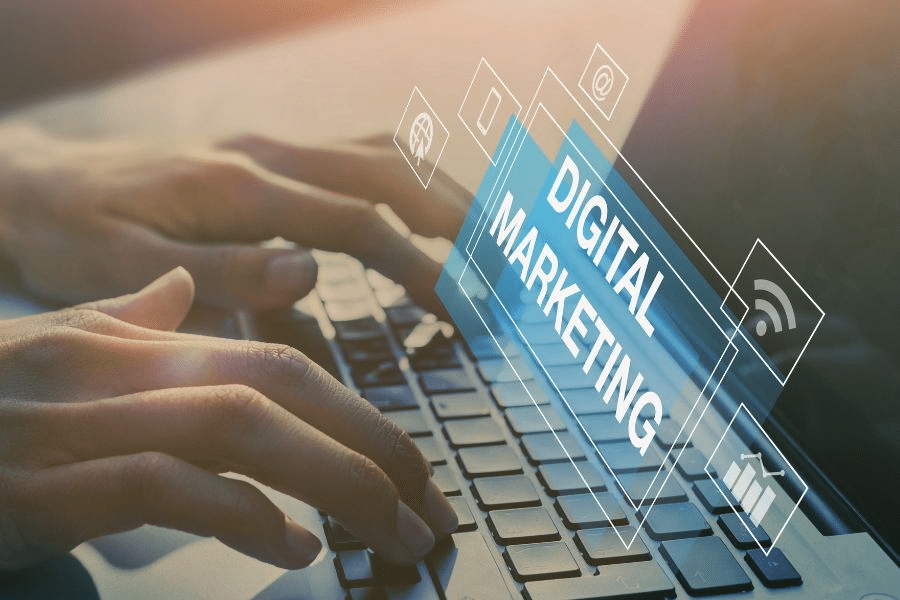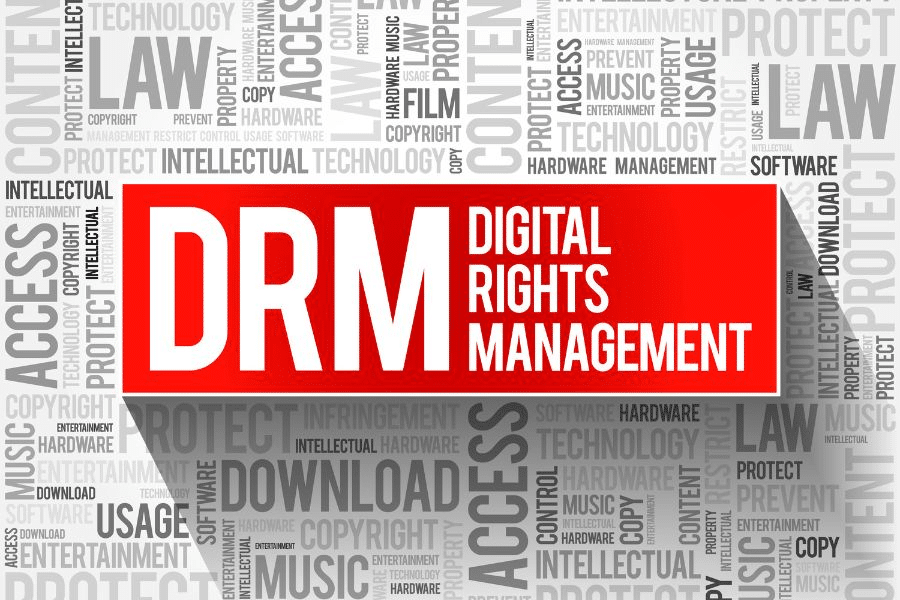In today’s digital world, it is more important than ever to protect the rights of content creators and owners. Digital content is everywhere, from music and movies to software and video games.
It can be used by a lot of people all over the world. This has made things more complicated for people who make and own content, who now have to find ways to protect their work. Enter Digital Rights Management.
Digital Rights Management is a set of technologies that are used to control who can access digital content and how it can be used. In this blog post, we’ll explain what DRM is and how it works. It will help you see why it has become so crucial in the digital age. This post will tell you everything you need to know about DRM and what it does in the digital world.
What Is Digital Rights Management?

DRM is a type of technology that helps people who make content. It can protect their rights to their own ideas. It gives them the power to decide who can see and change their digital content and how they do it. It can make sure that it gets shared or changed with their permission.
Digital Rights Management software is becoming more and more important for entertainment and media companies in a world. You can find digital content quickly and shared widely through many online channels.
DRM technology not only protects the rights of the people who own the copyright but also keeps content from being stolen or shared without permission. It lets musicians, filmmakers, authors, and other people who make content say how their work can be used, for example.
It keeps the time and money they have spent on it safe. Digital Rights Management also helps businesses deal with problems they have with cybersecurity. For instance, keeping customer information secure, showing that they follow the rules, and avoiding downtime.
By using DRM, people who make content can have data protection regulations. It saves their ideas and stays out of trouble with the law. This is very important in a world where it’s easy to find and share digital content. DRM lets people who make digital content control it and ensure it is only used in ways they agree with.
How do Digital Rights Management Work?

DRM is a technology that keeps track of and controls who can access digital content. It works by adding a layer of security by encrypting the content. Then it will be hard for people who shouldn’t be able to access or use it to do so. Digital devices like phones, laptops, and media players can have DRM technology built in.
When a user tries to use DRM-protected content, the device checks to see if the user has the correct permissions and if the content can be used. The DRM system decrypts the content so that the user can access it if they meet the requirements. On the other hand, if the user doesn’t have the proper permissions, the DRM system won’t let them see the content.
DRM also lets the people who make digital content track and watch how it is being used. For example, if someone shares a DRM-protected song without permission, the content creator can find out who did it and punish them.
DRM technology is generally a flexible way to protect intellectual property and track how it is used. It lets people who make content like audio files share with confidence.
Uses of Digital Rights Management

DRM technology can be used in many different ways and has become an essential tool for people who make content and businesses. DRM lets digital content creators protect their work and control access by knowing how it is used and shared. This has many good points, like:
Keeping Money Safe
DRM helps people who make content keep their money. It ensures that no one uses or shares their digital content without permission. This makes it easier for content creators to get paid for their work and keep the money they make.
Stopping Piracy
DRM makes it harder for people who shouldn’t be able to get to digital content to do so. This helps online piracy. This ensures that content creators get paid for their work and reduces piracy’s effect on their income.
Getting Things Out There
DRM technology allows people who create digital content to share it by giving them control over who can access and use their work. This can be especially helpful for businesses that need to keep track of how private or proprietary information is shared. End user license agreement
Improving How Users Feel
DRM technology can improve the user experience by letting content creators give users access to a broader range of content. In video games, DRM can be used to open up new features or levels.
You can use DRM technology in many ways to help content creators and businesses. Digital Rights Management is a tool that can be used differently and has become an essential part of the digital world. You can use it to protect revenue, stop piracy, make distribution more accessible, or improve the user experience and have the correct end user license agreement.
Digital Rights Management Software

Digital Rights Management software controls and manages how digital content can be used. DRM software adds an extra security layer by encrypting the content. It stops people who don’t have permission from getting in or using it. Digital multiple devices like phones, laptops, and media players can have DRM technologies put on them.
There are many different kinds of DRM software out there, and each one protects and works in an other way. Some Digital Rights Management software solutions are made for certain types of content, like music or e-books. You can use some for more than one thing. Some DRM software solutions are for individual content providers, while others are for big businesses.
To access content, users usually need a license or an activation key. It has been locked down by DRM software to make sure that paying users to get the service they deserve. The software then checks to see if the user can use the content and have the correct permissions.
The DRM software lets people who meet the requirements get to the content. On the other hand, suppose the user doesn’t have the correct permissions. In that case, the DRM software will stop them from accessing content like confidential employee data.
Digital Rights Management software is a tool that can be used in many different ways and has become an essential part of the digital world. It can save money, stop people from stealing other people’s work, make distribution more accessible, and improve the user experience.
Cybersecurity Problems in the Media and Entertainment Industries

In the media and entertainment industries, there are many cybersecurity problems, some of which are:
Theft of Intellectual Property
Intellectual property theft is a big worry for the media and entertainment industries. It’s when someone uses or shares protected content without permission.
Piracy
The media and entertainment industries also have a big cybersecurity problem with piracy. It is the illegal sharing of digital assets.
Data Breaches
When a data breach happens, unauthorized users can lose or steal sensitive information, like customer data and financial information. This cannot be good for companies that make media and entertainment.
Cyberattacks
Cyberattacks can stop a business from running, make it lose money, and hurt its reputation. For example, if someone did a cyberattack on a movie studio, sensitive information could get out. or
Malware
It is a type of software made to hurt a computer system. This can include viruses, spyware, and ransomware, among other things. All of these things can have a significant effect on how media and entertainment companies work.
Scams involving phishing
People are tricked into giving away private information in this type of cyberattack. This can include personal and financial information that you could use to steal someone’s identity or do other nasty things.
More and more problems are coming up in the media and entertainment industries. For these industries, protecting digital content, intellectual property, and reputation is essential. So, they need to put strong security measures in place.
The Future of Digital Rights Management

The digital content market’s growth will shape DRM technology’s future. For the future to work, there needs to be good protection against piracy and illegal use. Ultimately, creators’ rights and fair pay will be at the top of DRM technology. As cloud-based services become more popular, more secure, flexible, and scalable, DRM methods could be made for authorized users.
How Digital Rights Management technology changes will depend on how secure and private data is. As more sensitive data is stored digitally in a related embed code, companies must ensure that their DRM systems can keep it from being stolen. They should make sure it doesn’t get lost or gets into the hands of people who shouldn’t be able to see it. This means that the digital content industry needs new DRM methods to keep up with the changes.
DRM technology will improve for sure. In a digital world that is constantly changing, companies and people who make content try to protect their rights. DRM will change the media and entertainment industries and help protect the people who create content.
Frequently Asked Questions
What are examples of digital rights management?
Some examples are digital watermarks, fingerprinting, and rootkit software. Code is often used to write digital content that you can use online. This means that it can only be read or unlocked by particular devices or software. Scrambling is a way to keep copies from being made.
What is the importance of DRM?
DRM is an abbreviation for “Digital Rights Management.” It is a way to keep digital content from being used or stolen without permission. Knowing this, users can’t copy, share, or change the content in a way that the content provider doesn’t allow.
How does PDF Digital Rights Management work?
DRM often lets you limit copying, printing (and how many copies can be made), editing, and access. Some of the features of more advanced DRM systems will be the ability to take away or restrict access and create documents.
What are the components of DRM?
DRM is made up of four main parts. It has digital rights management, encryption, licensing management, and a client that works with DRM.
Final Thoughts
Digital Rights Management has become essential for people who make and own content. It can protect their work and ensure they get what’s due to them in the digital world.
DRM helps people who make, own, and use digital content. They can now limit access to digital content to stop people from stealing it from torrent sites. As the digital world changes, DRM will still be an important way to protect the rights of content creators and owners.
To learn more about DRM, research and keep up with the latest technologies and trends. You will be able to see how it affects the online world. As people who make, own or use content, it’s essential to understand how DRM works to protect everyone’s rights.
So, if you want to make, own, or use digital content, you should learn about DRM and what it does in the digital age. Together, we can ensure that everyone stays safe and fair in the digital world.







